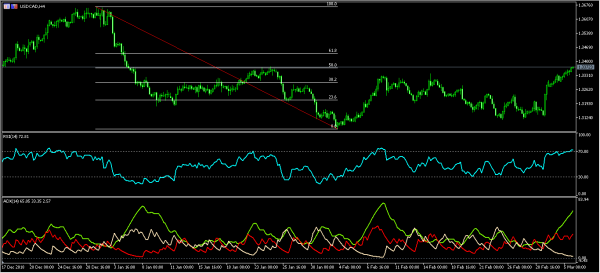The Australian dollar declined sharply after the country released the Q4 GDP numbers. The numbers showed that the economy rose at an annualized rate of 2.3%, which was lower than the expected 2.5%. Previously, the economy had grown by 2.8%. on a MoM basis, the economy expanded by just 0.2%, which was lower than the expected 0.5%. The main reason for this slowdown was the reduction of capital expenditure, which decreased by -1.0%. These numbers came a day after the RBA left interest rates unchanged. They also came a month after the RBA lowered the full-year guidance of the economy.
The US dollar index rose slightly ahead of key data expected today. Today, ADP will release the jobs numbers for February. The numbers are expected to show that the economy created 189K. This will be lower than its previously released number of 213K. The number will come two days before the Labor department is expected to release its jobs numbers. In each of the past two releases by the BLS, the economy had added more than 300K.
The Canadian dollar continued the decline against the USD ahead of the Bank of Canada interest rates decision. The bank is expected to leave interest rates unchanged at 1.75%. Traders will closely watch the statement from the Governor in which he will explain the rationale of the decision. In recent months, the country’s economy has been slightly sluggish, which is in line with other developed countries. The country has also been in a challenging political environment, which has seen the resignation of key ministers from Trudeau’s government. This is after it emerged that officials close to Trudeau had helped a Quebec-based construction company avoid prosecution.
USD/CAD
This month, the USD/CAD pair has risen sharply from a low of 1.3127 to a high of 1.3370. The reason for this is the ongoing corruption scandal in the country and the overall USD strength. On the hourly chart, the current price is the highest since January 24. It is also above the 21-day and 42-day EMAs and along the 50% Fibonacci Retracement level. The RSI has moved up to above 70 while the average directional index has moved to a high of 65. While this trend may continue, the pair could also move lower if the BOC sounds hawkish in its statement.
EUR/USD
The EUR/USD pair declined in overnight trading as traders waited for the US jobs numbers and the Fed’s beige book. It reached an intraday low of 1.1290, which was the lowest level since Thursday last week. On the hourly chart, the pair is below the 21-day and 42-day EMAs. The Relative Strength Index (RSI) has moved lower to the 30 level, which is often the oversold level. The pair’s movements today will depend on the ADP jobs numbers. However, this number often differs from the official government number by a large margin.
AUD/USD
The AUD/USD pair declined sharply today after Australia released the GDP numbers. The pair declined to a low of 0.7030, which was the lowest level since the first week of January. On the four-hour chart, the price is along the lower line of the Bollinger Bands, while the RSI has continued to decline. The momentum indicator has dropped below the 100 mark. There is a likelihood that the pair will continue moving lower today but this could change depending on the jobs numbers and the Fed’s beige book.
